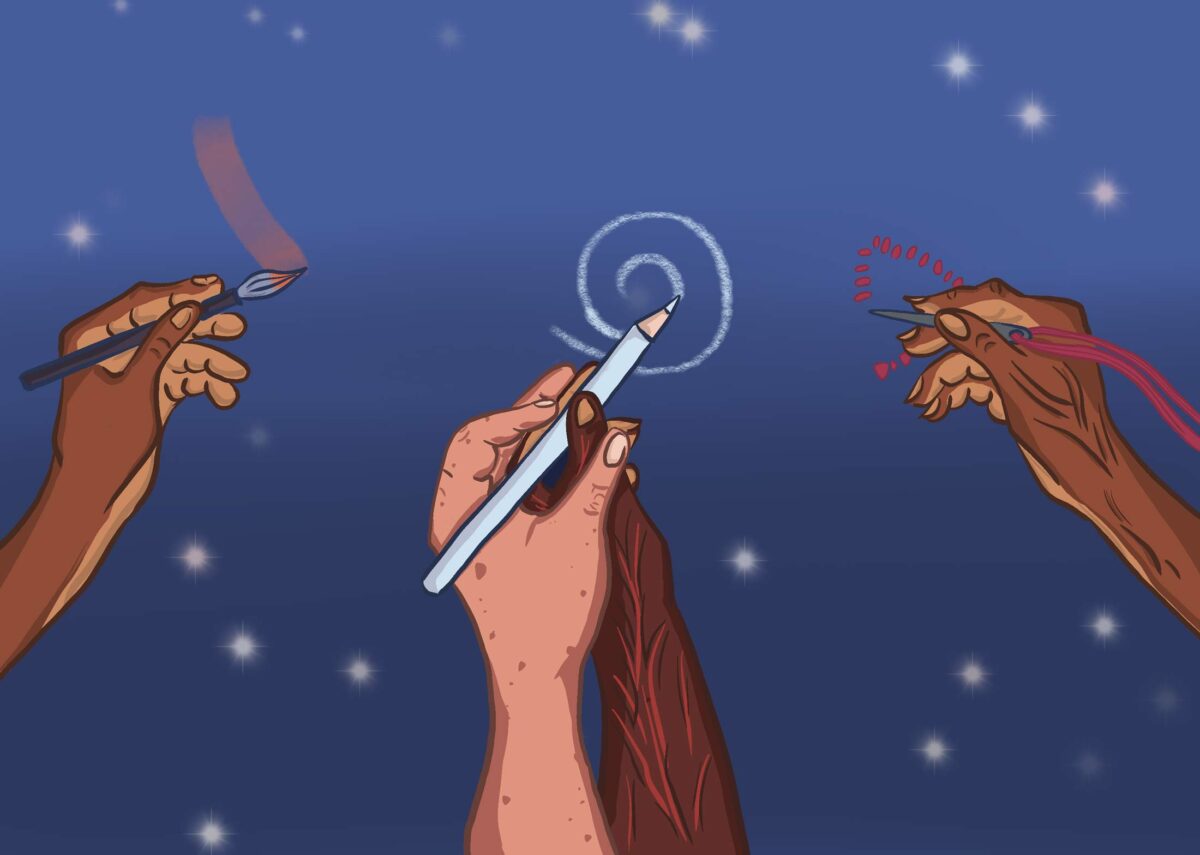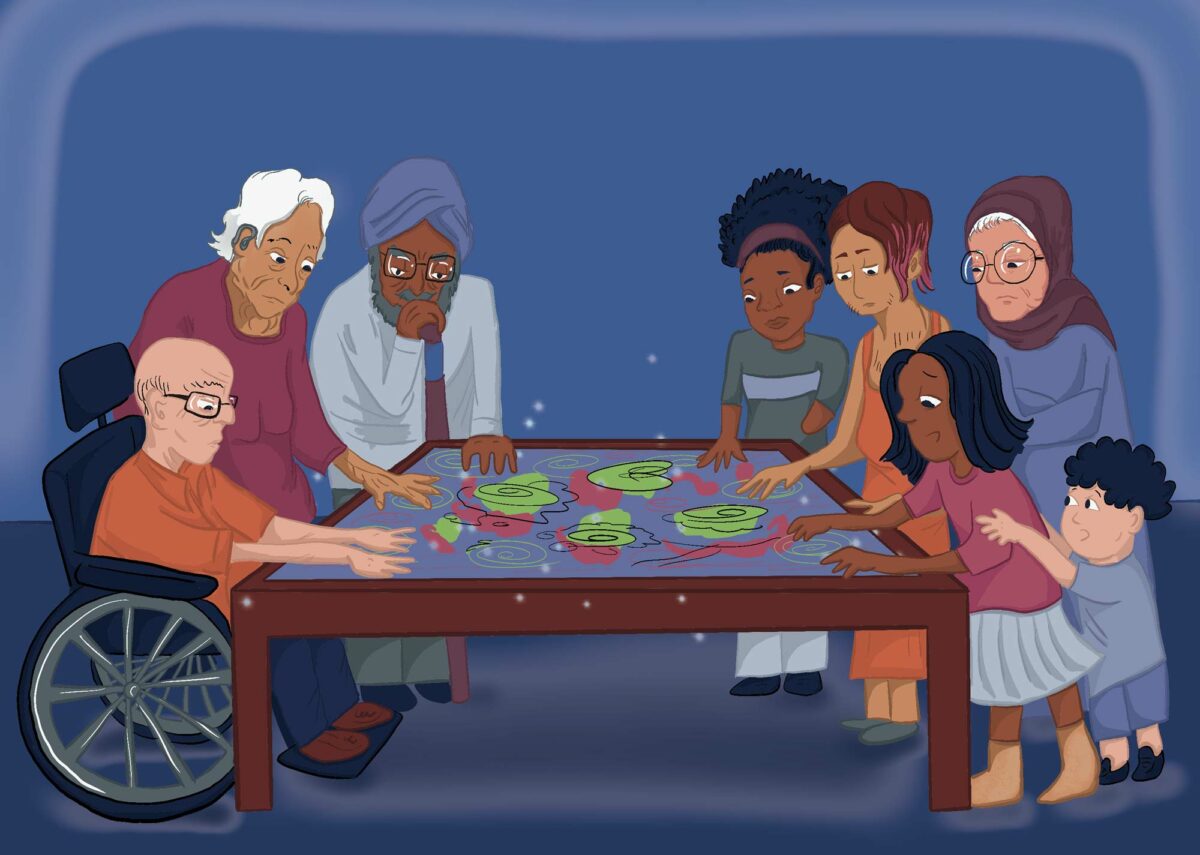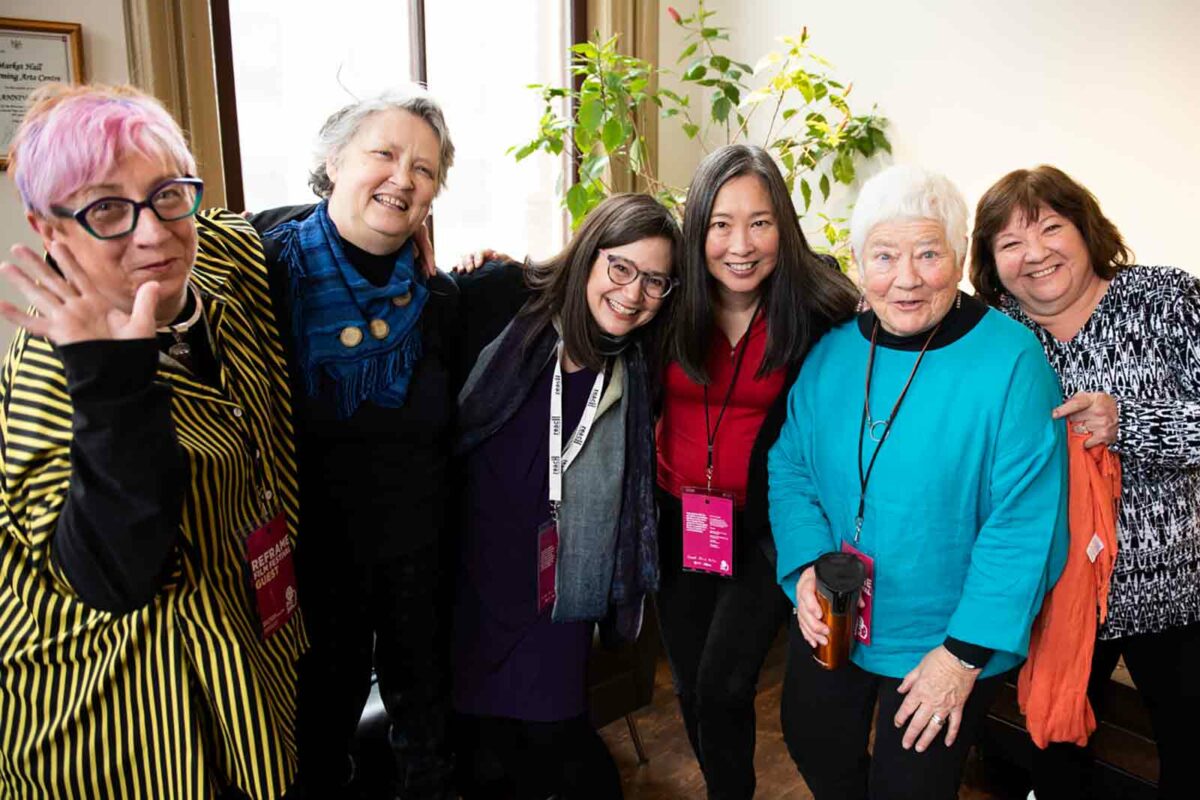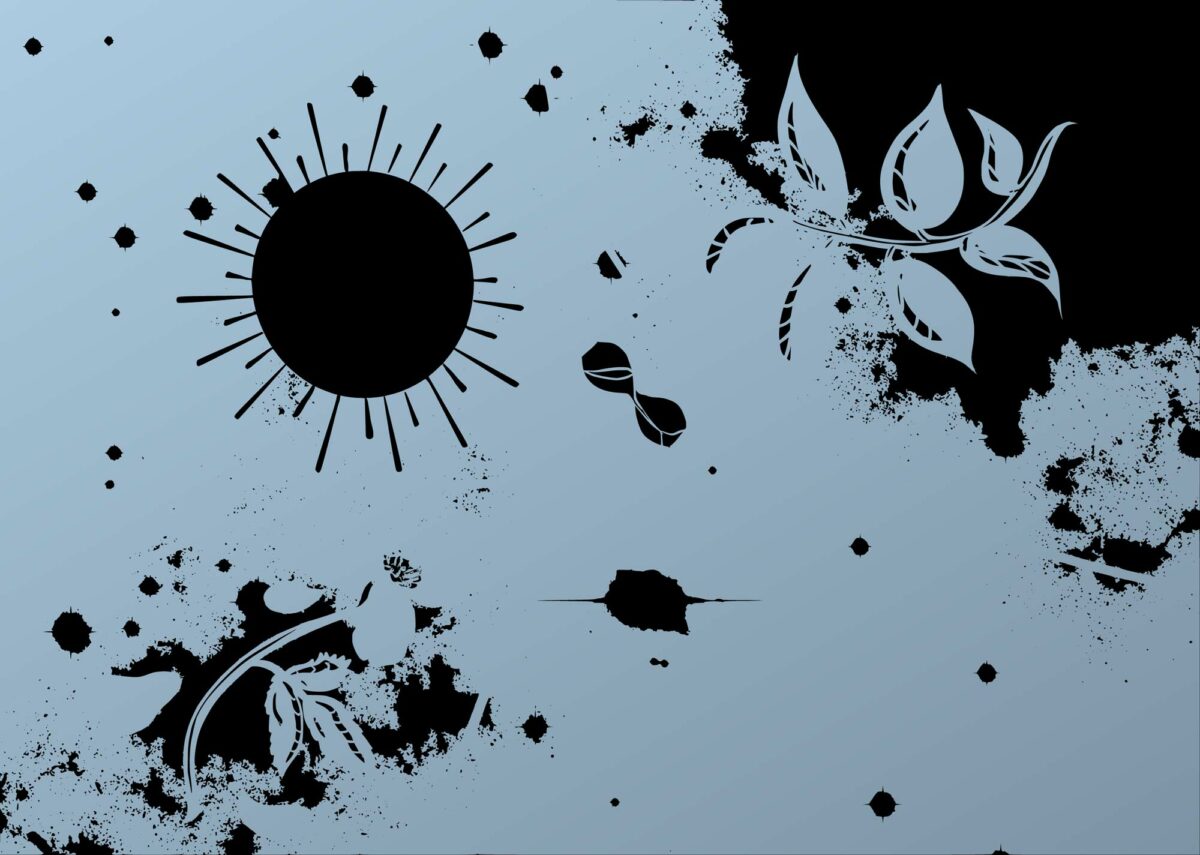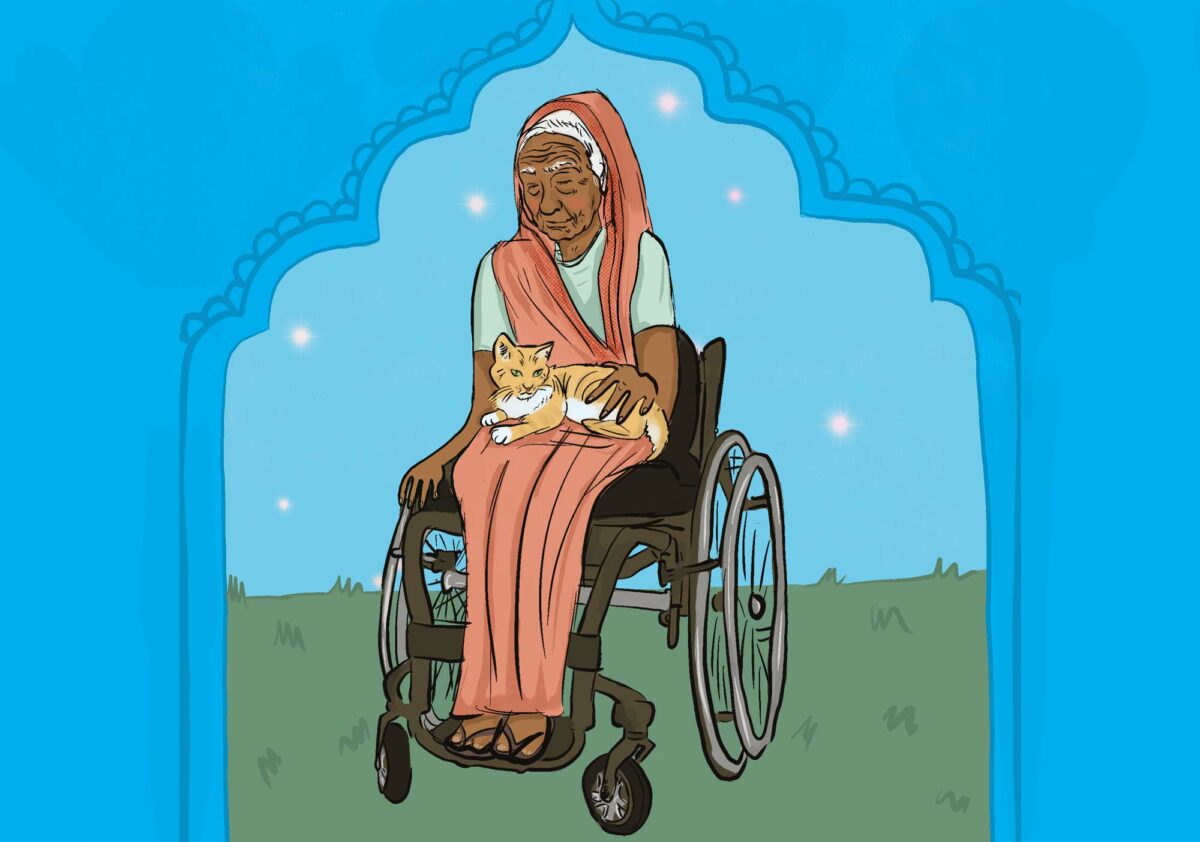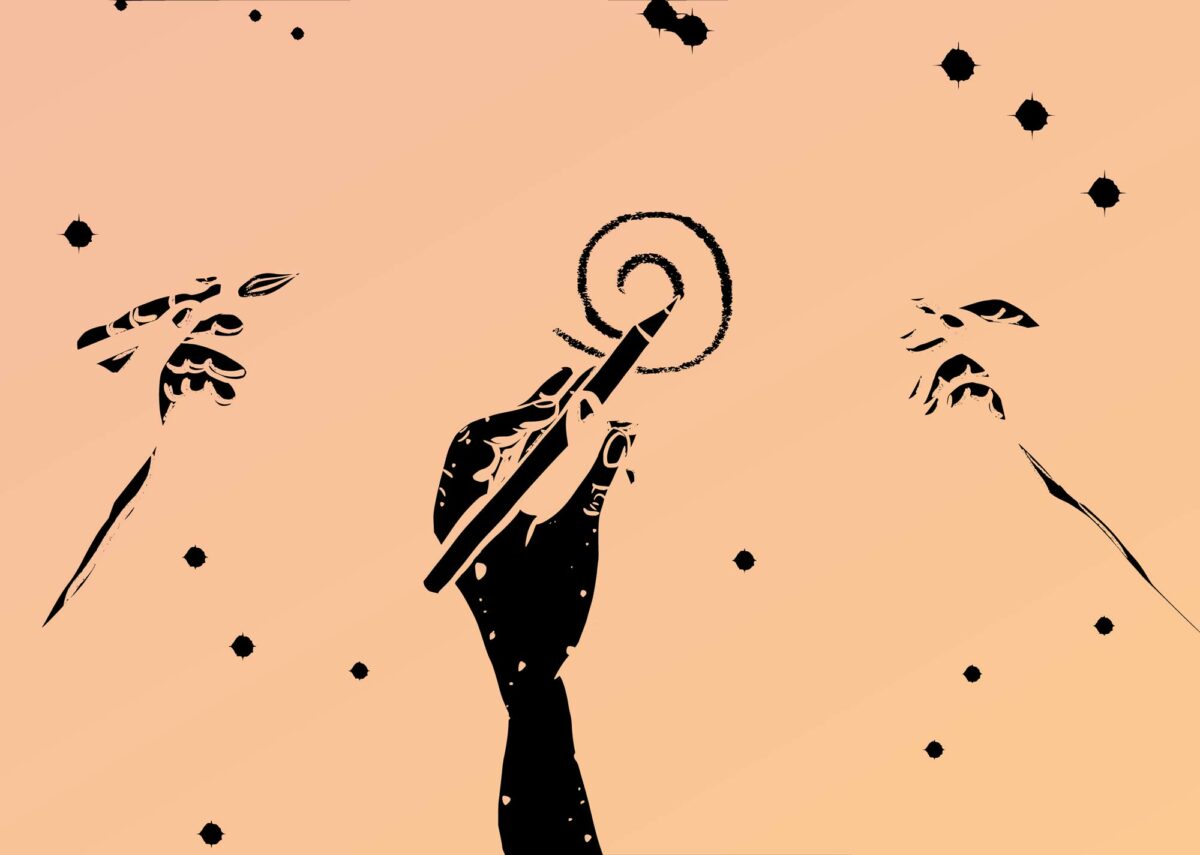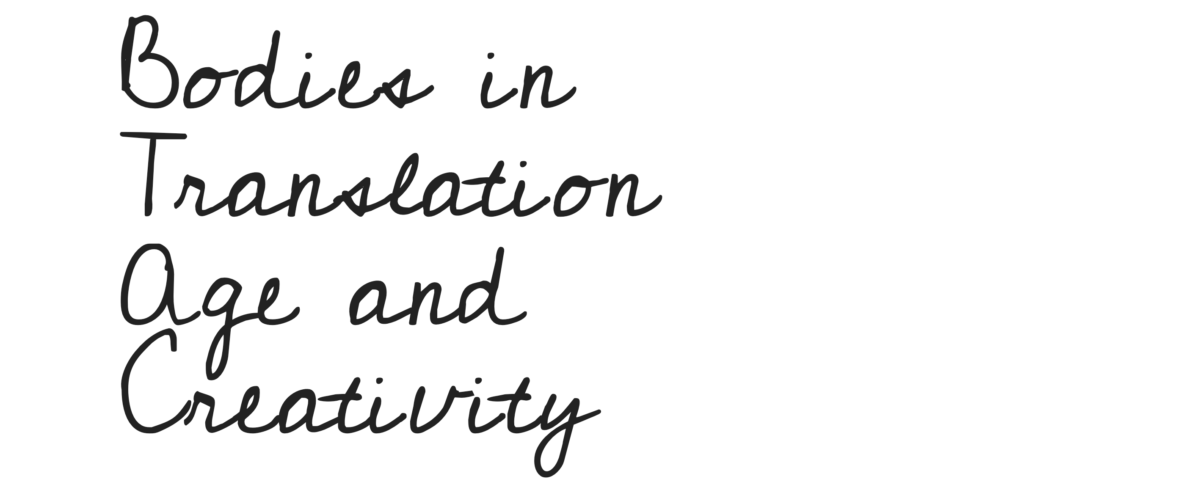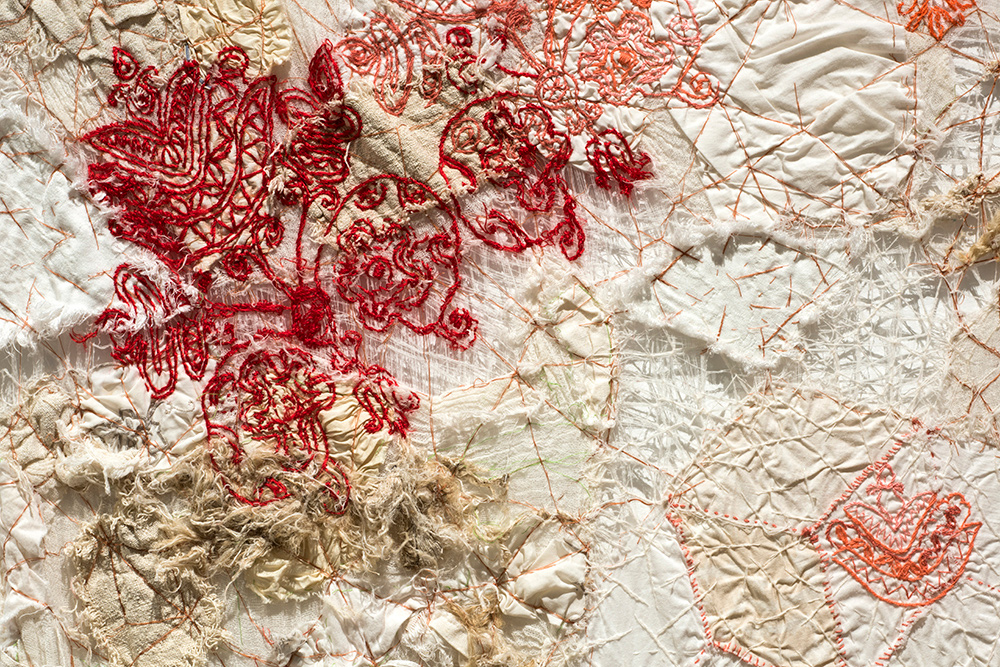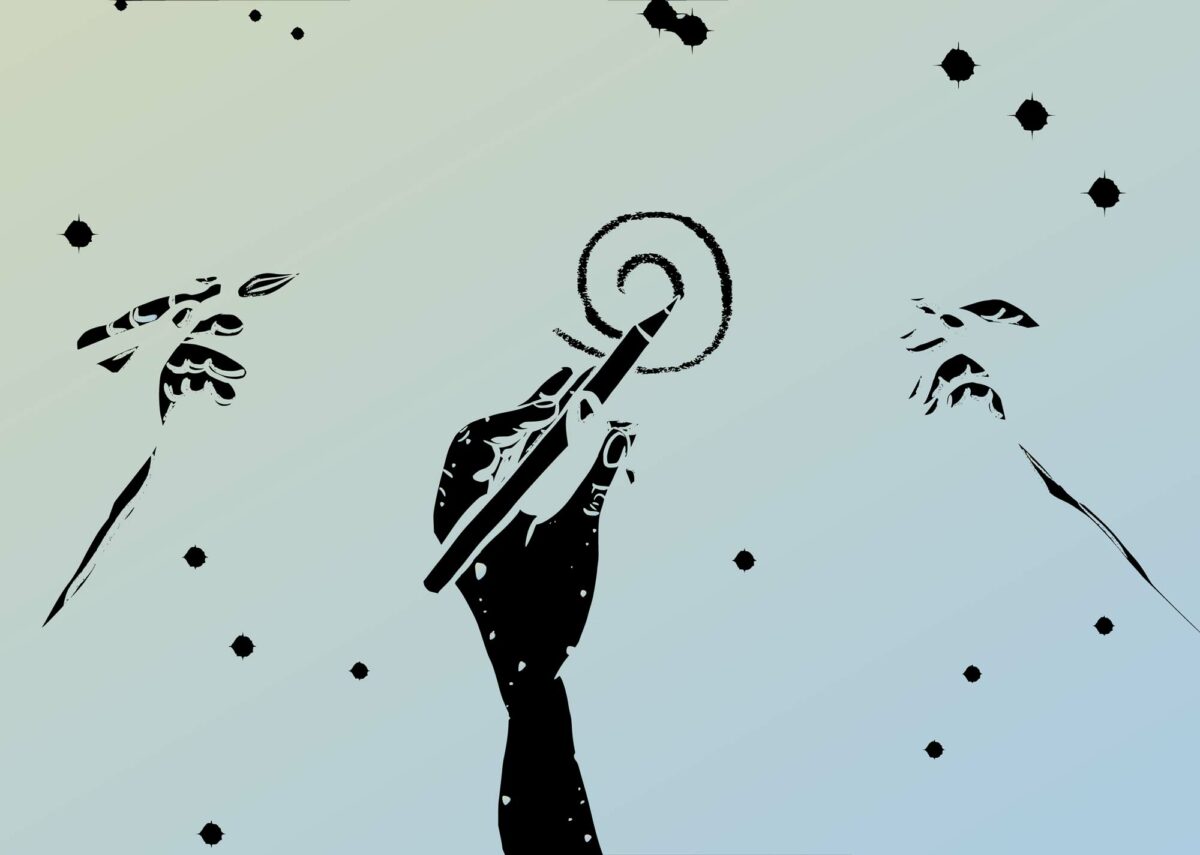This module explores how aging art and storymaking generate counter-narratives that offer complex, nuanced, and diverse understandings of aging through the perspectives of aging people and the art they produce.
Aging art, created by people who identify as aging, of an age, old, older, and/or E/elder, exposes us to different paths, practices, and modes of resistance to harmful popular ageist and ableist assumptions and representations. In this module, some of the storytellers reclaim the invisibility and disavowal of chronic pain, while others move with and into aging and experiences of disability which often come with aging as welcomed and desirable. Some speak of stolen lives and colonial violence, sharing stories from their own culturally-informed ways of knowing, being, and becoming. Others animate aging bodies as sexual in unexpectedly delightful ways. And some introduce and define queer aging and crip aging as ways to pridefully engage in activist art.
These aging artworks and the narratives that surround them illustrate different ways of encountering and perceiving time. Some of the artists and storytellers represent time as cyclical, intimately connecting the past with present and future. Others present their timescape as directional along a continuum of ancestral lineage. Some reflect experiences of time as existing outside of a normative linear direction and punctuated instead by abrupt stops and breakages between before and after.
Centring intersectional experiences and embodied understandings of aging, this module highlights an urgent need to “revision” aging and dismantle the ableist and ageist “successful aging” paradigm that currently dominates western popular discourses and representations. Doing so brings into the world multiple representations and understandings of aging in ways that render aging as desirable, not something to be feared. Stories and art-making provide aging artists ways to interrogate, challenge, and redefine harmful beliefs and representations, and they provide avenues for us to envision more encompassing and vital futures for all.
The work in these modules represent aging as a sociopolitical identity and demonstrate how humans age with and through interrelationship with others. Humans experience aging through multiple, overlapping embodied differences that materialize and exist in relation to one another and other bodies, and entangle with different cultures and belief systems.
In this module, a selection of different artists and storytellers share personal narratives that reflect their own complex understandings and approaches to aging:
- Indigenous storytellers share understandings of aging that are inherently disruptive, as growing old for Indigenous peoples is significant and marks an achievement of resistance, resilience, and ceremony against ableist, ageist, and racist colonial logics, as well as affirmation of Indigenous knowledge.
- Queer storytellers share understandings of aging that expose and critique normative heterosexist expectations for aging and older women, and, in turn, imagine and celebrate resistant and proud ways to age.
- Disabled storytellers “crip” aging to reclaim both aging and disability together as prideful and enacting agency, affording new possibilities of representing aging and disability to emerge.
Each storyteller approaches aging through their own embodied experience, which means that some of their personal stories may confirm or contradict your own prior beliefs. We ask you to respectfully and openly approach and attend to these stories as sources of knowledge. You may encounter stories of disability, poverty, homophobia, ableism, racism, and madness. Become conscious of how you interpret stories through your own perspectives and ways of knowing. Pay attention to the affect and emotion that is being expressed and that you may feel in response.
The learning activities and reflection questions invite you to work within intersectional and interdisciplinary perspectives and consider your whole body in the learning experience. When you engage with these stories and discussions, we recommend pausing, reflecting, and connecting these diverse perspectives and representations of aging to your own assumptions and ways of knowing. Query your assumptions, and question where dominant narratives of aging come from and for whose purpose.
Stories and art-making provide aging artists ways to interrogate, challenge, and redefine harmful beliefs and representations, and they provide avenues for us to envision more encompassing and vital futures for all.
This module provides in-depth analyses of three major BIT projects and collaborations: 1) the Aging Vitalities digital storytelling workshop; 2) the Age and Creativity exhibition; and 3) the Aging/Disability Nexus symposium and edited collections.
We have designed activities for individual reflection and for integration into classroom or workshop settings. We invite educators and learners to explore social justice activist art and digital stories as a means to decolonize assumptions and disrupt stereotypes. Across the module, you will discover links to other relevant projects, sites, and related readings. We encourage you to check out the glossary when you encounter new and unfamiliar terms, including identity-focused terms, in-group language, and reclaimed words.
Module Sections
Contributors
- Eliza Chandler
- Nadine Changfoot
- Jodie Salter
- Jami McFarland
An illustration by Naheen Ahmed of a starry blue and purple universe with a bursting comet, a sun and moon icon in yellow and white, a pink flower shedding its petals, a green leafy stem, and a brown hourglass tipped sideways.





